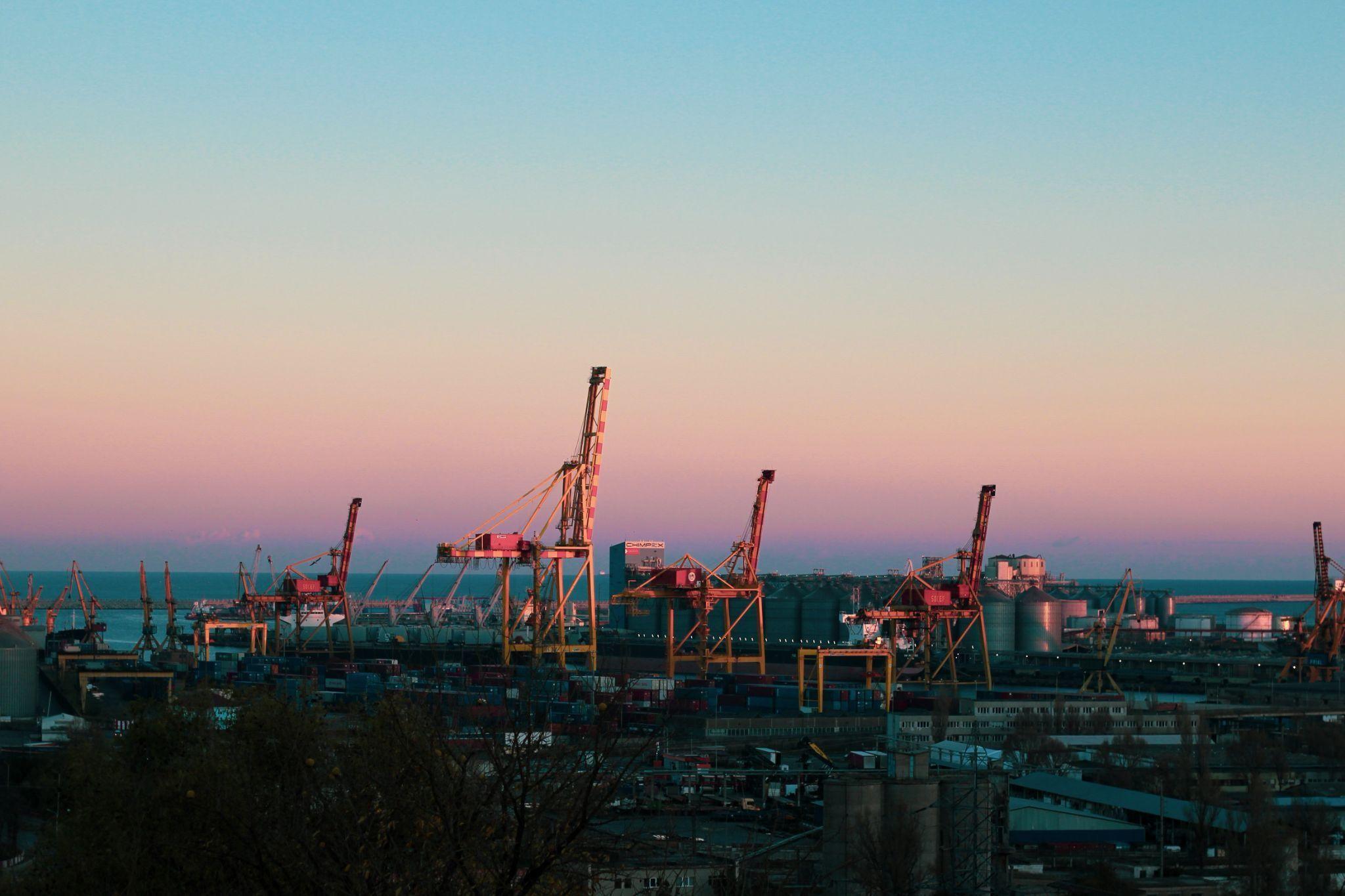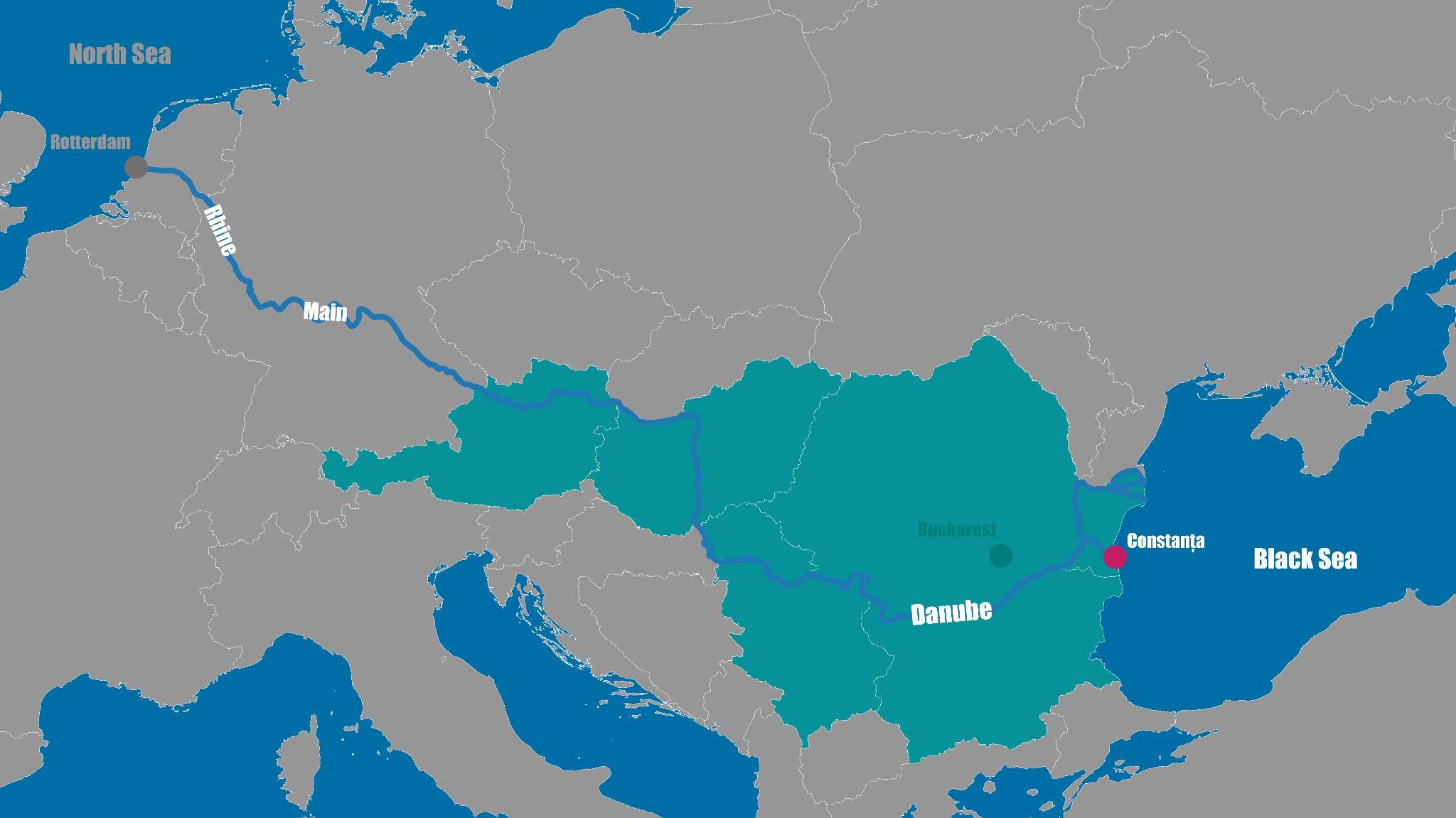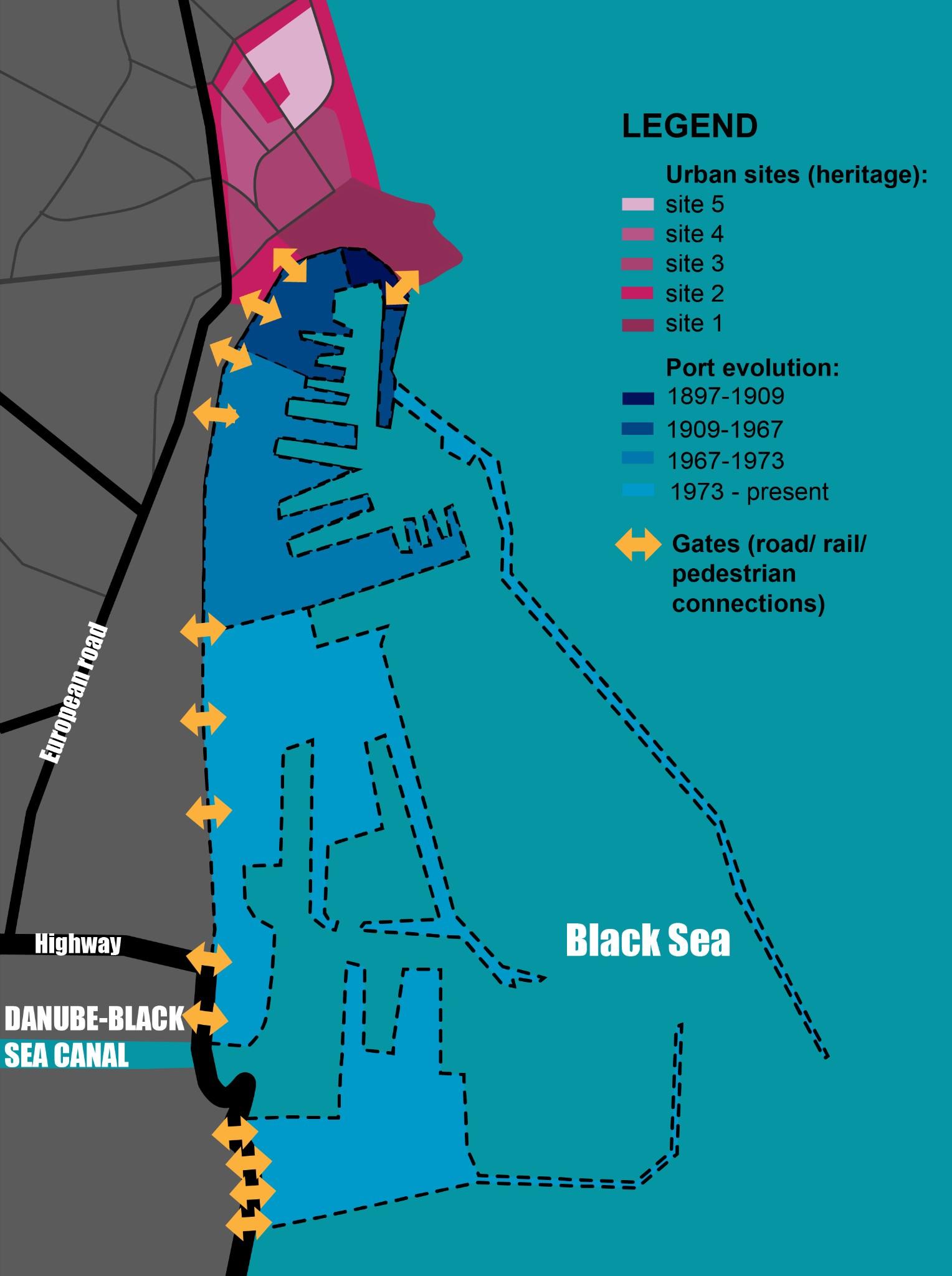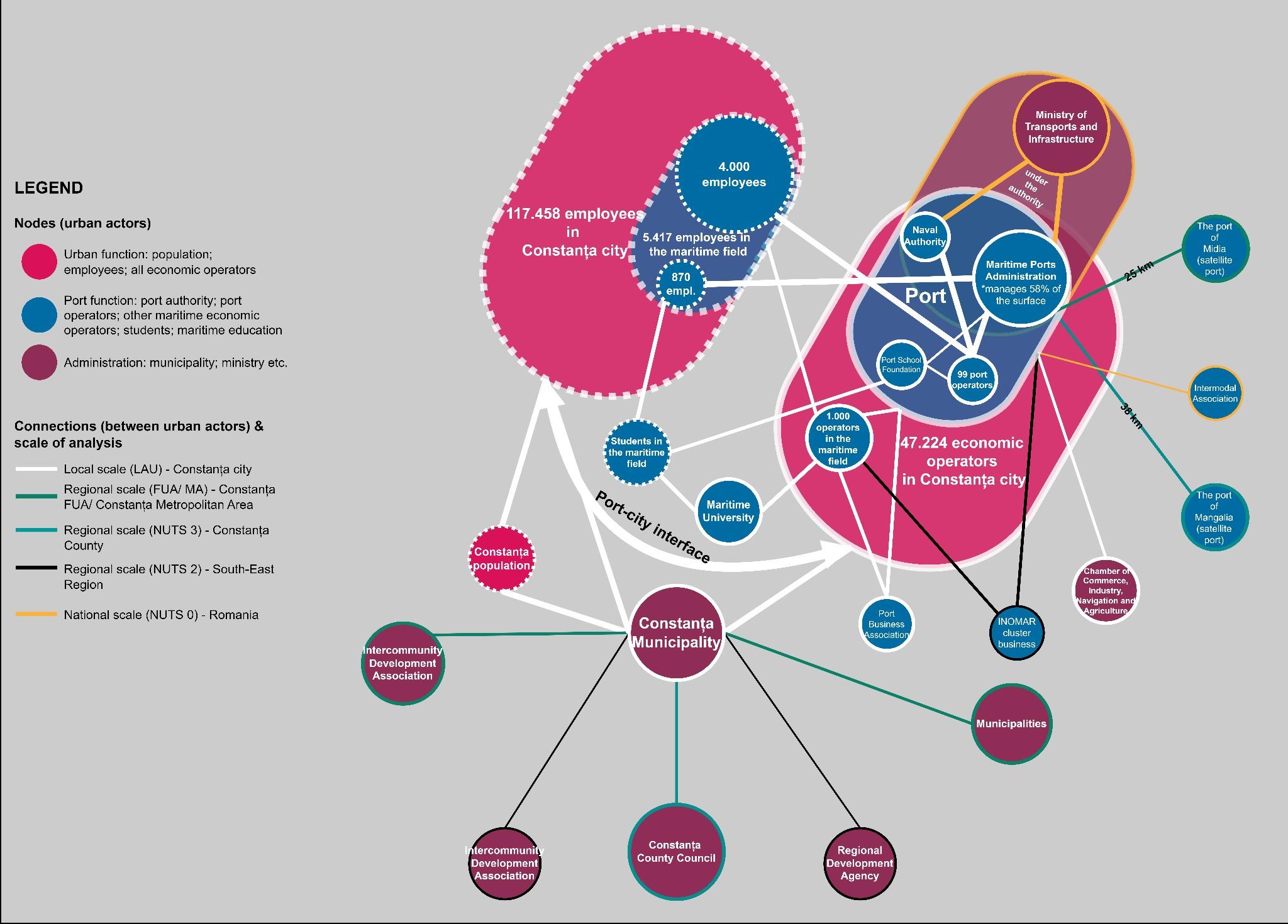Simona Dolana

The port city of Constanța, Romania's maritime gateway, lies at a strategic geographical location. However, it has struggled to overcome various challenges for the past three decades. Some of the city's biggest challenges include a declining population (-8% [2000-2022], NIS 2022), a loss of workers in port activities (-80% [1988-2018], Tița-Călin 2018), and deteriorating transportation infrastructure (especially the port's railway, RRSC and RNSC 2022). In this regard, Constanța is not unlike many other port cities. However, many port cities, especially European ones, opted to refocus their economies and develop similarly to non-port cities (general city typology, according to Ducruet and Lee 2006). Whether or not Constanța will evolve into a city where industries unrelated to shipping will flourish remains an open question. In this blog post, urban researcher Simona Dolana demonstrates how Constanța’s challenges can potentially be overcome by concentrating on the city's strengths, priorities and urban actors.
It is mostly due to its strategic location and large port that Constanța has so much potential: many Asian countries ship their goods through this port (Săgeată 2009, cited in Săgeată 2014; Sârbu and Mitrea 2014), and the Rhine, Europe's most productive river in terms of logistics and industrial activity, is connected to Constanța through the Rhine-Main-Danube Canal (CCNR 2020). Thanks to the Danube, next to Romania, northern Bulgaria, Serbia, Hungary and Austria constitute the hinterland of the port of Constanța (illustrated in Figure 1).

Through regional optimization, this hinterland could grow. The metropolitan areas of Constanța and the capital of Romania, Bucharest, are relatively close (about 200 km), so it may be possible to establish a functional regional system connecting the two. Should this scenario play out, the entire southeastern region of Europe would feel the effects of this new regional system (Sârbu and Mitrea 2014). Furthermore, in this regional scenario, Constanța, along with the other Danube ports situated close to Bucharest (namely Giurgiu and Oltenița, approximately by 60 km), may be able to contribute more to the economy of Bucharest than newly envisioned national port projects, such as the 1 Decembrie and Glina ports, which would be built near Bucharest. On the other hand, these potential new ports could instead also be integrated into the aforementioned regional system, to represent a network of cities among which different port functions are distributed (Forgaci 2021). Given that the larger county of Constanța already has a multimodal regional infrastructure well-suited to the logistics operations required for port activities, this scenario presents itself as entirely possible. The county is served by the Danube-Black Sea Canal, an airport, distributional railways, important roads and a motorway that links Bucharest with Constanța (Sârbu and Mitrea 2014). Except for the airport, all are connected directly to the port of Constanța through the port's gates (illustrated in Figure 2).

However, in the current geopolitical climate caused by the conflict in Ukraine, Constanța’s port has reached its maximum capacity (Filip 2022). To better manage the massive influx of Ukrainian grain, state representatives and those directly involved in the supply chain for the first time organized an event dedicated to the port logistics of Constanța, in July 2022. Solutions and methods to enhance supply flows, particularly via a well-developed rail system, were presented along with illustrative case studies. Through an integrated strategy to address congestion issues, those present at the event advocated for developing new services, alternative routes (for instance for goods coming from Asia) and infrastructures, including digital ones (Constanța Hub 2022). European funds are planned to be used to update the port's facilities in the near future (Grigorenko 2022). The railway system is currently already undergoing a phase of intense renovation. Furthermore, different stakeholders plan to enlarge the port in various ways, such as by building a logistics park (Hagi 2020). The number of factories, distribution centers and telecommunication firms in Constanța County and Romania’s South-East region would increase through these actions (Dolana 2022).
Another challenge, in addition to those posed by transportation infrastructure, is that fewer people are needed to operate the port of Constanța due to increasing automation. This trend of fewer workers is likely to persist (Dolana 2022). The Ministry of Transport and Infrastructure must support research and innovation in the port sector, the Constanța Port Business Association proclaimed during a 2021 debate (Tița-Călin 2021). The same can be said for the various local academic institutions that provide maritime-related courses and degree programmes. This issue also centers on the importance of individual and collective responsibility and values in securing employment for communities, even if port operators adopt new technologies (Delft Design for Values 2018). In this respect, several kinds of projects could be carried out simultaneously by educational institutions and other relevant urban actors (illustrated in Figure 3). Ultimately, through a clear vision and strategy, and by means of smart technologies, this complex network of actors may be able to guide the growth of Constanța and its surrounding region, allowing the port to follow the lead of other ports (for example Rotterdam’s digital transformation, presented in Esri & The Science of Where Podcast 2019), and move from technological innovation in logistics to digital transformation innovation (Dolana 2022).

Acknowledgement
Simona Dolana is a Ph.D. candidate at the "Ion Mincu" University of Architecture and Urban Planning's Doctoral School of Urban Planning. Her Ph.D. study topic is the development of a multi-scale analytical approach for European port cities via urban networks. The approach's uniqueness is its incorporation of two indexes evaluating the intermediacy (port function) and centrality (urban function) of European port cities based on Eurostat data. These indexes provide new insights into the dynamics of port cities.
This blog has been written in the context of discussions in the LDE PortCityFutures research community. It reflects the evolving thoughts of the authors and expresses the discussions between researchers on the socio-economic, spatial and cultural questions surrounding port city relationships. This blog was peer-reviewed by members of the PortCityFutures community, and edited by the PortCityFutures editorial team: Carola Hein, Hilde Sennema, Vincent Baptist and Foteini Tsigoni.
Bibliography
CCNR (Central Commission for the Navigation of the Rhine) (2020). Inland Navigation in Europe Market Observation: Annual Report 2020. https://www.ccr-zkr.org/files/documents/om/om20_II_en.pdf.
Constanța Hub (2022). “Descriere eveniment.” https://constantahub2022.traficmedia.ro/.
Delft Design for Values (2018). “Research through Design for Values: An Exploration of Seven Projects.” https://www.delftdesignforvalues.nl/2018/research-through-design-for-values-first-exploration/.
Dolana, Simona. (2022). "Perceiving the Evolution of Local and Regional Connections of Constanța Port City through the Lens of Network Analysis." PORTUSplus 13. https://portusplus.org/index.php/pp/article/view/259/232.
Ducruet, César, and S.W. Lee (2006). "Frontline Soldiers of Globalisation: Port-City Evolution and Regional Competition." Geojurnal 67(2), 107-22. https://halshs.archives-ouvertes.fr/halshs-00458057v2/document.
Esri & The Science of Where Podcast (2019). “Port of Rotterdam: The Digital Transformation of Europe’s Largest Port.” https://www.esri.com/about/newsroom/podcast/port-of-rotterdam-the-digital-transformation-of-europes-largest-port/.
Filip, Andreea (2022). “Portul Constanța, sufocat din cauza războiului din Ucraina: Totul e blocat, de la depozite la terminale.” Observator. https://observatornews.ro/eveniment/portul-constanta-sufocat-din-cauzarazboiului-din-ucraina-totul-e-blocat-de-la-depozite-la-terminale-468567.html.
Forgaci, Claudiu (2021). “Why Does Bucharest Not Have a Port?” PortCityFutures Blog. https://www.portcityfutures.nl/news/why-does-bucharest-not-have-a-port.
Grigorenko, Yuriy (2022). “Romania spends $39 million on modernization of the Port of Constanta.” GMK Center. https://gmk.center/en/news/romania-spends-39-million-on-modernization-of-the-port-of-constanta/.
Hagi, Cristian. (2020). “CN APM SA, primii pași în dezvoltarea Molurilor III S și IV S din Portul Constanța: Vor apărea 11 dane de mare adâncime, 70 ha de platformă de operare și 36 ha de zone logistice.” Constanța 100%. https://www.ct100.ro/cn-apm-sa-primii-pasi-in-dezvoltarea-molurilor-iii-s-si-iv-s-din-portul-constanta-vor-aparea-11-dane-de-mare-adancime-70-ha-de-platforma-de-operare-si-36-ha-de-zone-logistice/.
NIS (National Institute for Statistics) (2022). POP107D - Populația dupa domiciliu la 1 ianuarie pe grupe de vârstă și vârste, sexe, județe și localități. http://statistici.insse.ro:8077/tempo-online/#/pages/tables/insse-table.
RRSC (Romanian Railway Surveillance Council) and RNSC (Romanian Naval Surveillance Council) (2022). Studiu privind infrastructura portuară și infrastructurile de servicii legate de activități feroviare din Portul Constanța. https://media.hotnews.ro/media_server1/document-2022-07-18-25684067-0-studiu-infrastructura-servicii-feroviare-port-constanta.pdf.
Săgeată, Dănuț-Radu (2009). "Romania: A Geopolitical Outline." Potsdamer Geographische Forschungen 28, 45-58.
Săgeată, Dănuț-Radu (2014). The Urban Systems in the Age of Globalization: Geographical Studies with Focus on Romania. Saarbrücken: LAP LAMBERT Academic Publishing.
Sârbu, Cătălin, and Andrei Mitrea (2014). “O poartă europeană închisă: Constanţa și coridorul intermodal către Cernavodă.” In Cea de-a şaptea ediţie a conferinţei de cercetare în construcţii, economia construcţiilor, arhitectură, urbanism şi dezvoltare teritorială. https://incd.ro/wp-content/uploads/2014/12/ATUAC7.pdf.
Tița-Călin, Ion (2018). “Portul Constanța a pierdut 80% din locurile de muncă din sectorul de operare, în trei decenii.” Cuget Liber. https://cugetliber.ro/stiri-economie-portul-constanta-a-pierdut-80-la-suta-dinlocurile-de-munca-din-sectorul-de-operare-in-trei-decenii-355360.
Tița-Călin, Ion (2021). “Portul Constanța nu trebuie lăsat în afara revoluției tehnologice!” Cuget Liber. https://cugetliber.ro/stiri-economie-portul-constanta-nu-trebuie-lasat-in-afara-revolutiei-tehnologice-424482.
